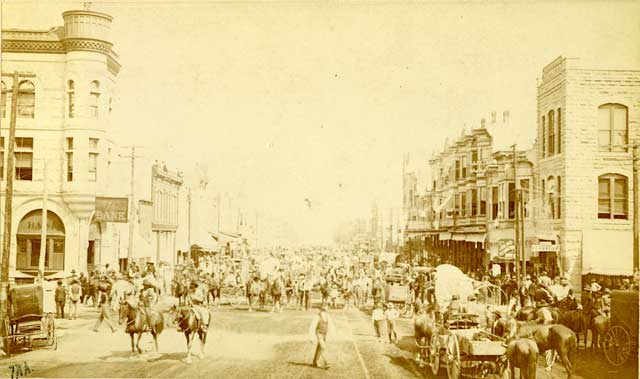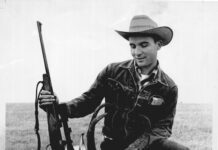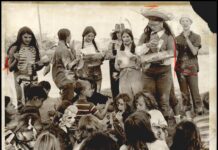[dropcap]With[/dropcap] the sound of a gunshot, the would-be settlers set off in search of new homes. Economic pressures compelled some, while a desire for free land and adventure surely drove others to stake a claim. It was Sept. 16, 1893, and it was still hot in Indian Territory. They traveled on horseback, train or any other method they could find to create one of the most iconic scenes in the state’s history. Most believed they belonged there, and the government had told them they had the right to try.
The pressure to open the Cherokee Outlet, as the area was called, came from multiple sources and had grown for years. Surrounding areas had experienced drought, as well as a severe dip in the economy that Aaron Preston, archivist at the Cherokee Strip Regional Heritage Center, describes as “the worst economic recession America would see until the Great Depression.”
Originally, the Cherokee Outlet, which encompassed current day Garfield, Grant, Major, Woods, Alfalfa and Ellis counties and parts of Kay and Noble counties in northern and northwestern Oklahoma, was assigned to the Cherokees. However, the Cherokees were not allowed to live on the land because of a government treaty and instead leased it to cattle ranchers, Preston says.
The situation changed when the federal government outlawed ranching on the land. “The Cherokees were forced to sell the land to the government for pennies on the dollar,” Preston says. After successful efforts to stall the opening of the land by the Cherokees, according to the Encyclopedia of Oklahoma History and Culture, the land was designated for a land run in September 1893.

Photograph by Phillip A. Miller, Thomas N. Athey Collection, courtesy of the Oklahoma Historical Society, #4990.
Many sought a new life on the prairie, but in truth, it was more of a high stakes gamble. Preston shares the rules of this particular game: Stake your claim, figure out the coordinates of your new land, and take that information to the nearest land office. Once there, you sign paperwork promising to improve the land you claimed, pay a filing fee of $14, and live there for a minimum of five years. After five years, the settler received the deed for the land.
Sounds simple, but there were logistical problems for thousands of people.
Not only did registering at the land offices often take weeks or months, but participants were required to get a certificate in advance of the opening. According to the Encyclopedia of Oklahoma History and Culture, the registration booths at each of the nine entry points to the land opened a mere five days before the run and were “located on the prairie with neither shelter nor immediate access to water or other necessities.” Tens of thousands of people lined up at these booths and many suffered from heat and exposure, and at least 10 people died. Even more people were injured in the mad dash at each entry point and while boarding and unloading the trains that transported some to areas within the territory. “Of the 100,000 people who made the run, only about one in five remained,” Preston says.
The land run of 1893 meant a new life on the prairie for many and disaster for others, and it created an exciting, controversial piece of Oklahoma history that is an enduring part of the fabric of our state.

























